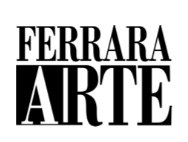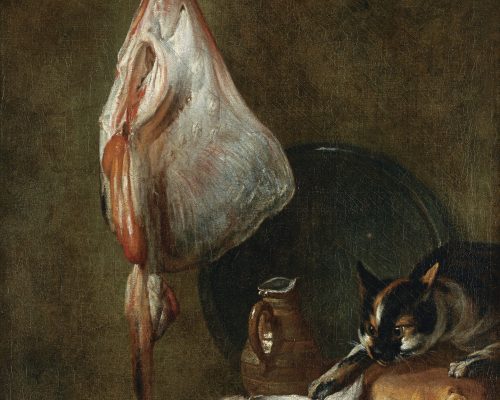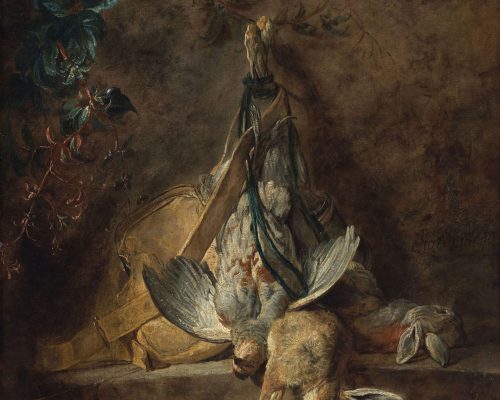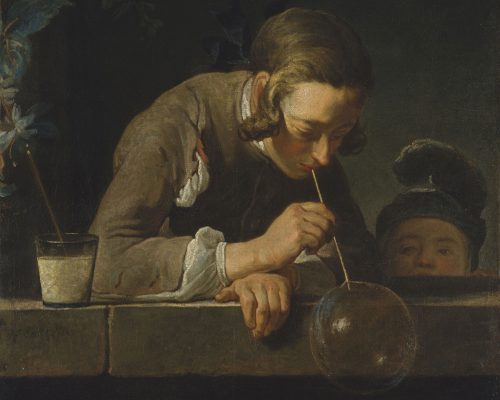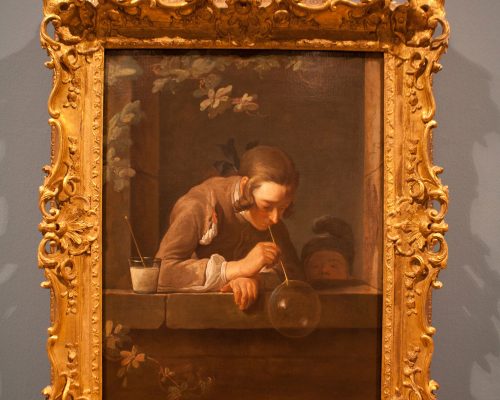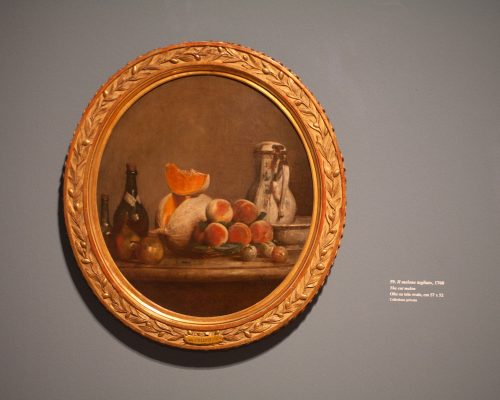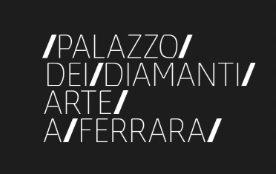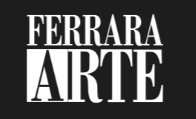Writing to his brother Theo in 1885, Vincent Van Gogh expressed his admiration for Jean Siméon Chardin (1699-1779), an artist whom he held to be “as great as Rembrandt.” A key figure in 18th Century French art, Chardin was one of the most important painters of all times and had a significant and lasting influence on countless major modern and contemporary artists, from Cézanne to Matisse to Morandi.
Palazzo dei Diamanti presents the first Italian exhibition dedicated to this illustrious artist, who sensitively portrayed the common people and their daily lives. The show, curated by the pre-eminent Chardin scholar Pierre Rosenberg, is organized in collaboration with the Museo del Prado in Madrid where the exhibition will travel after its debut in Ferrara.
The son of an artisan, Chardin came to painting only partially by following traditional paths. He became an apprentice in the studio of an historical painter quite early, and unlike his peers, he preferred to make his own studies by directly observing his subjects rather than going to Italy to see works of the masters. “I must forget everything I have seen, and I must even forget the way such objects have been painted by others,” affirmed the artist, seeking a new way of looking at reality and painting it.
Although Chardin chose to paint still life, which at the time was considered a minor genre, he was successful and became famous in the competitive Parisian scene. In 1728 he was accepted by the Académie Royale de Peinture et de Sculpture when the paintings he had submitted in support of his application were mistaken, by some members of the Examining Committee, for Flemish works from the previous century. The exceptional colours and the magical treatment of light effects of the works were responsible for this mistake, proving yet again how unique was Chardin’s painting style in early 18th Century France.
The following years saw Chardin producing still lifes featuring humble domestic utensils or relating to the activities of the upper classes, such as music or hunting. Portraying real life and the effects of light became the main preoccupation of the artist. This can be seen in the works dating from end of the second decade of the century, such as Basket of plums, bottle, glass of water and cucumbers, in which you can admire the transparency of the glass, or Hare with game bag and powder flask, in which the lifeless corpse of the animal yields to the observer’s gaze in all its moving truth. Another masterpiece by the artist dating from about 1734 is Pestle and Mortar, Bowl, two Onions, Copper Pot and Knife, a work of great simplicity that is at the same time monumental, demonstrating the painter’s ability to draw a mysterious beauty from even the most mundane composition.
Beginning in 1733, Chardin extended his studies to the human figure, creating sophisticated masterpieces radiant with the tenderness and delicacy with which he drew his subjects. The artist painted genre scenes that avoided the picturesque, composing scenes in which domestic servants or the scions of the French bourgeois were more or less figured in the act of doing some simple daily task. One of his favourite themes was the depiction of children at play, as seen inSoap Bubbles and Girl with shuttlecock. The subject of the first painting, which may be viewed in the exhibition alongside two other versions by the artist, is one of Chardin’s favourite and most commonly chosen themes, and this picture exemplifies perfectly the extraordinary sympathy with which he represented infancy and adolescence, with the small child raised on tiptoes, his fascinated gaze transfixed on the bubble being made by the youth in the foreground. In the second picture, dating from 1737 and shown at the Salon in the same year, the Chardinian lyricism is expressed through the carefully harmonized balance between the simplicity of the composition, the delicacy of the colours and the child’s gently focused concentration. Thematically analogous, The Young Draughtsman was shown at the Salon in 1738. Here Chardin gives life to a sweet symphony of colours with the boy’s red cheeks complementing the ribbon on the drawing folder, while the blue of his smock picks out that of the paper.
The Cellar Boy and The Scullery Maid, both subjects that he painted several times, come from more humble origins. In The Cellar Boy (1735-36) Chardin adopts the traditional compositional shrewdness of the 17th century yet achieves a completely modern result. By focussing the light on the foreground and leaving the background in undefined shadow, he highlights the youth and his utensils, so that the jug, basins and bottle take on the same prominence as the attributes of the martyrs and saints in Caravaggio’s works. The Scullery Maid, painted in 1738, on the other hand, is more a homage to Vermeer, to whom Chardin is considered his heir. This time the protagonist is not captured in action, but in a moment of brief respite, a sort of “dead moment” during which her gaze is lost off picture, suggesting a momentary suspension of time.
Completely different are works such as Monkey as painter and Monkey as antiquarian, which were shown at the Salon in 1740. In these curious and irreverent paintings, the artist challenges himself with a genre which was already much in vogue, that of the “Singeries” of the Flemish masters, satirical compositions in which monkeys are portrayed in human postures.
At the end of the 1740s, Chardin returned exclusively to painting still lifes. This new period saw an intensified study into the relationship between tone and colour and on the variations on the effect of light on objects. His touch became increasingly meticulous; his forms more animated by vibrant brushstrokes which almost break down the material. This new spirit is anticipated in the 1737 work, The Smoker’s Case intensifying his achievements in the later extraordinary Vase of Flowers (circa 1755), these pictures together being amongst the bet of his work. The exceptional freshness of execution and the bold colours of the palette in Vase of Flowers create an impression of spontaneity when compared with the works of his contemporaries, giving final proof of Chardin’s firm ability to recreate reality through his painting. Analogously, the still lifes of the 1760s (Basket of Wild Strawberries from about 1760, and Grapes and Pomegranates from 1763) with their more intensely dramatic colours are like small universes to explore, in which the eye is drawn by the reflections of the fruit in the glass of water or the icy radiance of the porcelain vase.
The new style of painting that Chardin adopted between 1730 and 1750 was very well received, as can be seen by the public’s reaction to the works he presented at the Salon in 1737 and continuing with great regularity over the following years. The enthusiasm of the some intellectuals of the period, such as Denis Diderot, and the popularity of engravings after his works by Cochin and Lépicié created, in France at the time, a real “Chardinmania,” acclaiming him for the realism in his works and thus driving a new appreciation for still life as a genre. Amongst his admirers was Louis XV, King of France, to whom the artist presented a number of intensely moving intimate masterpieces, such as The Diligent mother and Saying Grace, receiving in exchange the esteem of the monarch and, in 1757, the great privilege of residing and working at the Louvre.
Towards 1770, problems of health forced him to slow down and he gradually abandoned oil painting, but by then, the road towards the great naturalistic movement of the 18th Century was wide open. And here we conclude the long career of an artist, who for all his life, saw painting as the means of knowing reality, carefully avoiding anecdotal content while aiming to achieve a timeless art that reflected the harmonious perfection of form and emotion.
Curated by
Pierre Rosenberg
Organized by
Ferrara Arte e Museo del Prado, Madrid
Enti promotori
Comune di Ferrara e Provincia di Ferrara
with
Regione Emilia-Romagna
Supported by
Fondazione Cassa di Risparmio di Ferrara, Cassa di Risparmio di Ferrara e Parsitalia Real Estate

